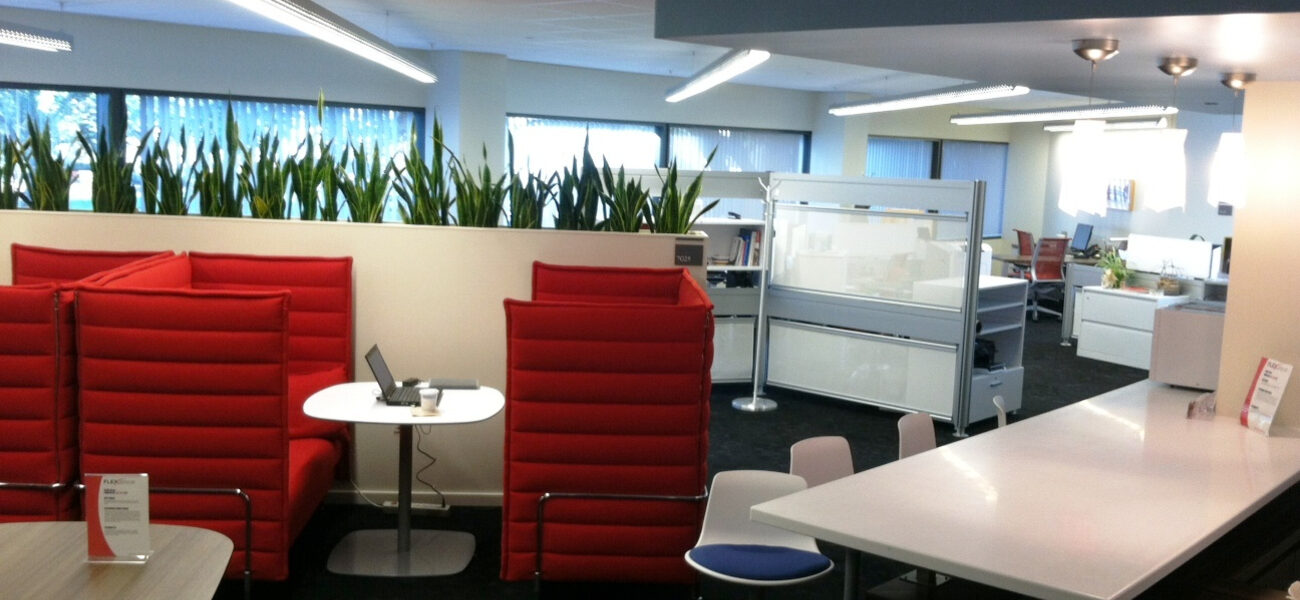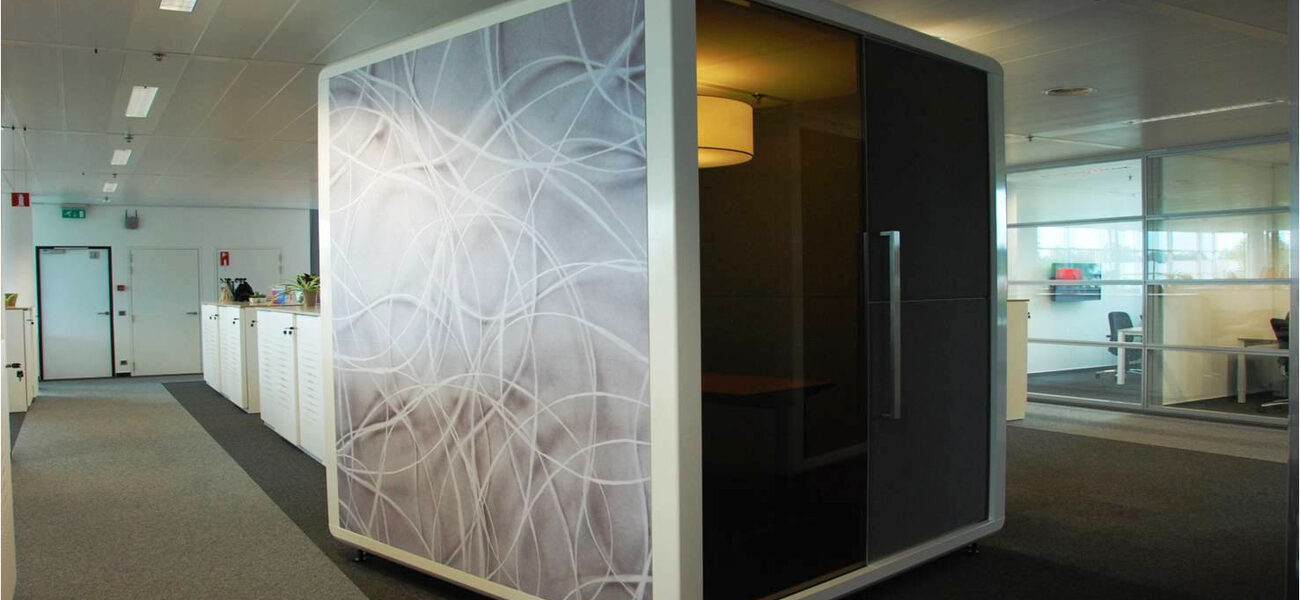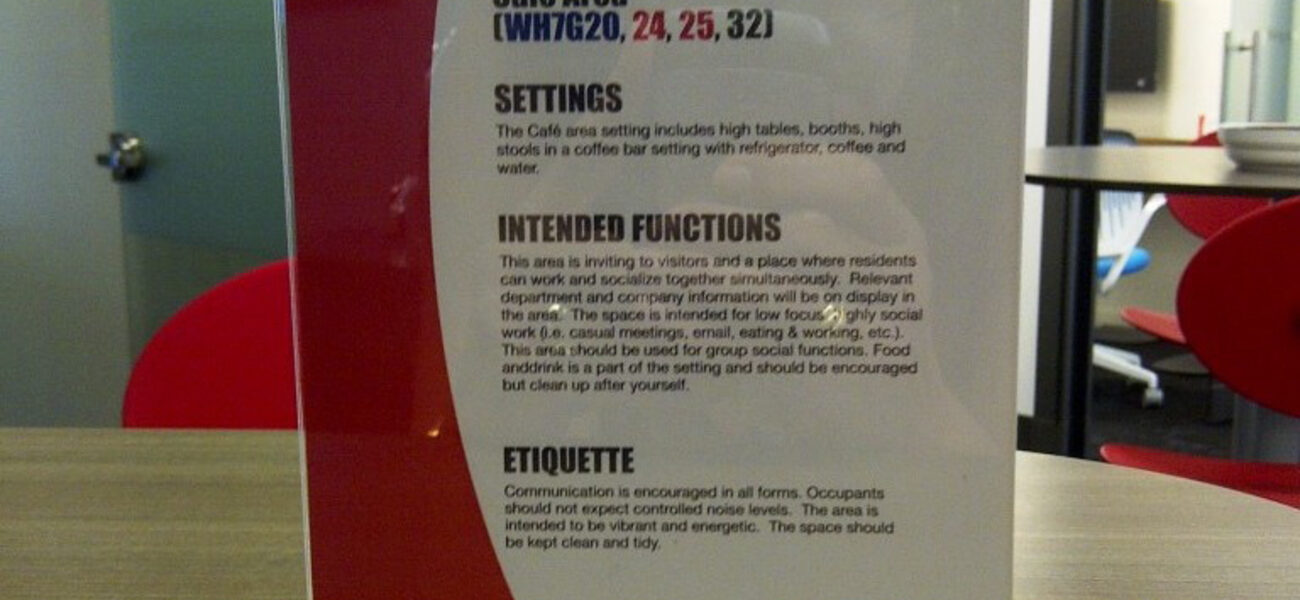Johnson & Johnson’s FLEXplace™ initiative—successfully deployed in 10 locations, with 20 more currently planned—has helped the company increase space utilization by 16 percent and accommodate 67 percent more people in the same square footage. The program is part of a global workspace initiative to enhance the employee experience and increase overall productivity, which at the same time increases asset utilization. FLEXplace is making workplaces more dynamic, with activity-based neighborhoods and strategically located mobility centers. The program helps the company meet the needs of a changing workplace by creating a common functional environment across locations, while respecting the different cultures where it is deployed.
Business economics dictate that FLEXplace be deployed to its fullest extent when the right real estate opportunity comes along, says Jon Sheh, director of global workplace strategy at Johnson & Johnson. When fully implemented, it can be a tremendous employee engagement tool and save money, because more people can be assigned to the same footprint.
The Main Tenets of FLEXplace
FLEXplace includes two main deployment strategies, but also acknowledges opportunities within the traditional spaces. The first strategy is hoteling in mobility centers—work zones that are not owned by any department, where any mobile employee can reserve space. The second is activity-based neighborhoods. Both mobility centers and neighborhoods rely on a variety of settings to promote internal mobility.
“Without that variety, people tend to migrate to the same spot every day,” says Sheh.
Neighborhoods are assigned to specific groups, but few individuals within the group own a spot in the neighborhood, explains Sheh—less than 30 percent work at a desk all day every day and require an assigned setting. The neighborhood includes an assortment of spaces designed for focus, privacy, collaborative open work, casual interaction, meetings, teamwork, and social events. Desks may be height adjustable to be used either standing or seated to address ergonomic issues, and access to daylight is a design priority. Places are provided for employees to put personal effects. Storage is separated from the work surface to encourage increased movement and reduce paper dependency.
Neighborhood lounges serve many purposes—as rooms for structured meetings as well as brainstorming sessions, “town hall” areas, and workplaces. The integration of secondary and tertiary uses into space design is essential to the neighborhood concept. For example, Sheh often works in a café booth at the entrance to his neighborhood, where people know he’s inviting them to stop and talk. Other, denser open areas are places where individuals can talk while they’re working, or where groups of people working on the same project can sit together and share ideas.
“One employee told me, ‘We were all working and a meeting broke out.’ That’s the collaboration we’re looking for—spontaneous as opposed to scheduled. Those spaces are great for collaboration,” says Sheh. “Instead of trying to create a desk that meets a person’s needs all day, we allow the workers to choose where they want to go depending on what they want to get done.
“Even though most people are not assigned to a specific space, each employee should feel ownership of a neighborhood. It is like your home because you share it with people you know, who are there every day. A neighborhood is about collaboration, teaming, working together.”
In contrast, a mobility center is more about efficient use of space and enabling a global workforce. Designed for mobile workers, they can be booked by any employee and provide a variety of work settings and basic technological necessities such as phone and computer access.
“The other thing mobility centers allow us to do is handle overflow if a particular department is overcrowded,” explains Sheh. “Larger FLEXplace deployments have both mobility centers and neighborhoods.”
Free addressing encourages more efficient space utilization by forcing employees to physically be present in order to claim a space. In a typical office, an employee who books a space from 9 a.m. to 5 p.m. may turn on the computer, drop off his stuff, and attend four hours of meetings elsewhere—tying up the space but not fully using it. This is called “passive occupancy,” notes Sheh, and can account for one-third of the workspaces.
“For this space planning to work effectively, 50 percent of the people need to be free addressing. Otherwise neighborhoods cannot accommodate the necessary variety to create a rich work environment. We use the neighborhoods as free addresses,” explains Sheh. “We don’t allow much booking in the neighborhood, so it forces people to talk and collaborate.” Educating teams to re-think how they have traditionally scheduled their day is a huge opportunity to positively impact productivity and improve morale. Something as simple as planning breaks to refresh can dramatically improve performance.
“With free addressing, you can’t use your stuff or a reservation to hold the space; you physically have to be there. That requires a certain culture or an etiquette, so it tends to work better in neighborhoods where people know each other,” he adds. “We apply this concept in neighborhoods more than in mobility centers.”
Addressing the Details
Once the company addresses the overall space concepts, it tackles details like technology solutions and how to make workers feel comfortable. For example, Johnson & Johnson is trying to go wireless as much as possible. Cables are still available but not widely distributed, and model-specific docking stations for computers are being eliminated.
Soft phone technology—the ability to make and receive calls through computers and/or bounce them to individual cell phones—is becoming more widely available. Video conferencing options are increasing as well, says Sheh. And new printing solutions allow employees to send a file to print, then go to any printer on campus and retrieve the item by scanning their badge.
“What we’re trying to do with these elements of technology is eliminate the difference between being at your assigned desk and being anywhere in the building,” he explains.
The company also is using FLEXplace to experiment with different ways to make the environment aesthetically pleasing, adds Sheh. Specific office spaces can be decorated with artwork, but employees personalize neighborhood spaces with shelving in lounge areas where they are encouraged to put personal items like trophies, photos, and books. Under consideration is using café spaces for quarterly exhibits or photo contests.
“We’re looking for different ways to incorporate people’s personal items into their workspace,” says Sheh. “But nowadays, we find that people have pictures on their laptops and phones. The items people bring in for the shelves are mainly for decoration, not necessarily sentimental value.”
Ambassadors Crucial to Making Concepts Work
Johnson & Johnson has found that having designated ambassadors and concierges is an effective, efficient, and cost-saving way to introduce these new environments to staff and smooth the cultural transition.
Companies can and should prepare the workforce ahead of time by involving them in the process, conducting trial periods, accepting feedback, and distributing information through technology such as websites and blogs, says Sheh. But reality doesn’t hit people until they move into the new spaces.
“You can explain for six months before people move in, but they are not really cognizant of the cultural change until they are actually there. That’s also when you find out what works and what doesn’t.”
Because the designers and planners are usually gone by that stage, companies should rely on the local workers to sustain the culture, says Sheh. Johnson & Johnson uses concierges where large deployments of workers are involved, and in the mobility centers where the population changes daily. They are trained to assist with questions and issues in the new workspace, but can be phased out when people learn how to do things themselves.
Ambassadors are more permanent and generally used in neighborhoods. An employee who is part of the work group is trained to assume a leadership role. These people may not necessarily be in charge of the group, but are able to make people feel welcome and help maintain the environment.
“We need ambassadors there all day, every day, so people have access to them. We need them to drive people to have ownership of their neighborhood, because if employees don’t feel like they own it, some of the behaviors won’t support what we want the environment to be,” explains Sheh.
Ambassadors often have a positive impact on the culture of the workplace, and may create a sense of home by bringing in cookies, decorating the space for holidays, or having a team lunch in the neighborhood, he adds. Taking ownership of collective group space is an important component of creating a strong culture.
“If you share a house with your family, why do you feel ownership of the kitchen? Because you do a lot of cooking. The fact that you don’t own a specific office doesn’t mean you don’t own the neighborhood. You just own it with a group of people,” notes Sheh. “That’s why finding good ambassadors is key.”
Johnson & Johnson has also found it helpful to post the etiquette for each workspace in the actual space, as opposed to distributing etiquette guides. The postings are brief descriptions of how the spaces are meant to be used, such as for quiet work.
“The descriptions stay there permanently, so there’s no question as to how the space is to be used. And sometimes we find we got it wrong; people use the space differently, so we change the etiquette,” says Sheh.
Learning as They Go
Johnson & Johnson’s team continues to learn and adapt, as it has deployed, and is in the process of deploying, FLEXplace in diverse locations throughout the United States and overseas in Europe and Asia Pacific. It’s important to take regional differences into account, says Sheh.
In India, for example, everyone comes to the primary workspace because working from home is not an option, and there aren’t places like coffee houses to accommodate mobile workers. In Europe, employees are more comfortable working in benching environments (open tables where employees sit shoulder to shoulder and across from each other). In the United States, workers prefer a low-wall cubicle environment, so the same functional space may look quite different.
Accommodating different cultural environments means a rigid set of criteria won’t work across the board, notes Sheh.
“Different projects take FLEXplace to different levels. Some gain a small amount of benefit and some transform the work people are doing. We don’t shun the ones not going as far; we need to understand that’s where their business is in its evolution.
“We have several strategies to get people working in a different way. We would rather do something that starts the journey than fight a battle and end the journey today.”
Sheh offers three important lessons Johnson & Johnson has learned about workplace design projects:
- Details are critical—Design every setting to perform a valuable work function. Use open space as a place for what you forgot. Make mobile workers’ lives easier than a traditional worker, not harder.
- Understand the workplace strategists’/leaders’ role in the change—“We are not always driving. Sometimes we are helping to justify. Sometimes we are supporting.”
- Make the culture change easy to adopt for the users—Sometimes it comes down to helping a specific individual find creative ways to adapt to the change.
Don’t be discouraged if the change is less than the full program potential, says Sheh. Every step forward builds momentum.
Do not measure impact too soon. Six months seems to be a good gauge for measurement. A positive impact should be apparent six months after move in, he concludes: “If you can confirm a positive impact in that time, you are on your way! If not, you’d better reassess. Flexibility is not just about them, it is about our programs being flexible too. Be ready to adjust.”
By Taitia Shelow
This article is based on a presentation Sheh made at Tradeline’s 2012 Space Strategies conference.
| Organization |
|---|
|
Johnson & Johnson
|



